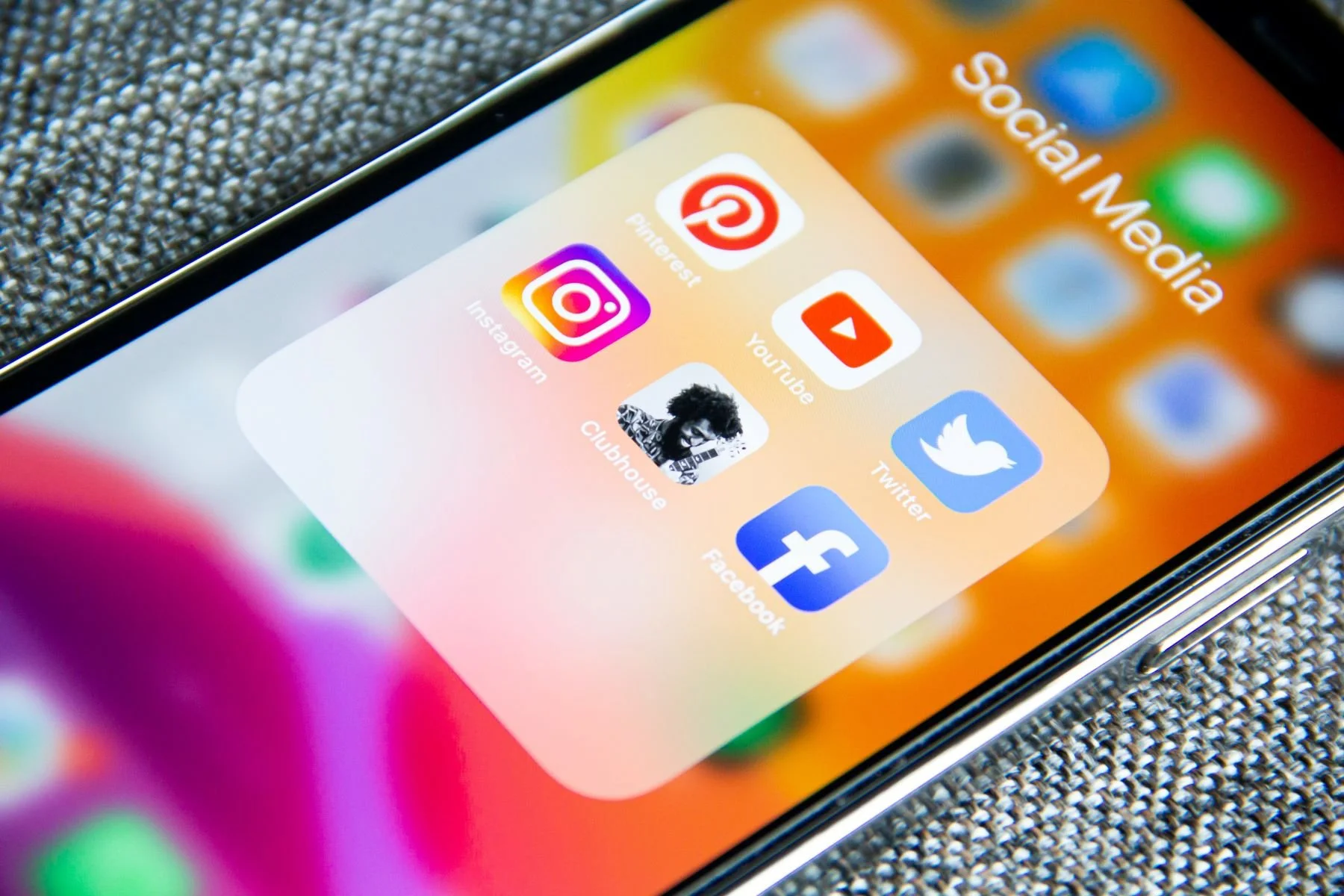Stepping into Spring and Toward Sustainable Social Media Use
Let me guess, you just responded to a text message while also noticing you have a new email to get to and a notification about an upcoming event on Facebook? Modern-day society is immersed in technology and particularly our social media. Broadly defined, social media facilitates the sharing of content, multimedia, and information through virtual networks and communities. It includes email, instant messaging, and accounts such as Facebook, Instagram, Twitter, Snapchat, and TikTok. According to Pew Research, more than 69% of adults and 81% of teens use social media daily, with more than 90% of teens using it for more than 4 hours a day. Social media’s ubiquitous influence makes it difficult to imagine a life without it and yet we are starting to learn more about challenges that may develop from this.
Social Media and the Brain
Research demonstrates that excessive social media use can impact our brain functioning and cognitive development in three key areas:
Attention
Social media use is the ultimate form of multitasking. We may be scrolling Instagram while trying to write a paper or searching the internet while talking on the phone. With the constant flow of information coming from apps that are competing for attention, our brain has become accustomed to quick and instant gratification. As a result, our sustained attention, the ability to focus on one stimulus for a prolonged period of time, has shown marked declines. In fact, heavy media multitasking is associated with decreased gray matter in prefrontal regions of the brain related to maintaining goals in the face of distraction.
Memory and Information Processing
Many of us use social media to document and revisit important events in our lives. However, research within the past 5 years shows that using social apps to document an experience may actually diminish your memory of the moments you wished to preserve. The first reason for this goes back to attention as media use requires multitasking (e.g., recording and posting about an event while it occurs) and has been shown to decrease concentration and reduce the ability to be fully present in an experience. Secondly, people can often use devices as a “crutch” in which they offload information onto them and then forget the information. In one study, participants who took photos of objects in a museum remembered fewer objects and fewer details about these objects than those who did not. Smartphones may help us document proof of an event, but typically we are not encoding those memories to the same capacity.
Social and Emotional Response
Social media has a reinforcing effect as it activates the brain’s reward center by releasing dopamine, a “feel-good chemical” linked to pleasurable activities, each time we receive positive feedback online (e.g., “likes,” “follows”, or a new message to check). Writing that important paper becomes even more difficult, and time consuming, when paired with social media use since it won’t have the same reinforcing power as our text messages or apps do. Importantly, the absence of likes and comments can also leave us feeling sad, lonely, and anxious because our brain is no longer receiving that hit of dopamine. This is often when social comparison takes a toll because we start to look to others to determine how we should behave, think, or feel based on who is getting the most “likes.” This is especially true for teens as online social comparison is associated with depressive symptoms, particularly among adolescent females. The good news is that research demonstrates that support and unconditional love from parents mitigates distress associated with teen social comparison.
Cultivating a Healthy Relationship with Social Media
Let’s not forget to mention the many positives associated with social media. It helps us to build and maintain relationships, share and gather new information, serve as a creative outlet, and more. It’s important to understand that researchers are not suggesting we get rid of our smartphones or stop using social media altogether. Like many things, striking the right balance is key. In a study conducted by the University of Pennsylvania with undergraduate students, half were asked to use social media as they normally would and the other half were only allowed 30 minutes of social media use per day. Participants’ subjective well-being was measured before and after the experiment and results demonstrated that loneliness and depressive symptoms significantly declined in the limited usage group over the three week study. It’s important to note that we are not all the same when it comes to social media use and emerging research demonstrates that sensitivity to social media varies from person to person. However, if you are wanting to make some changes, here is where you can start…
Social Media Self-Assessment and Boundary Setting
The first step towards making any lasting behavior change is to spend time reflecting on the impact of your current behaviors. Smartphones have a “screen time” function in settings that tracks use if you want to view your activity patterns. Begin with a self-assessment (or consider for a loved one) to determine what is considered “excessive” use for you:
How many social media sites do I have accounts with?
About how long do I spend on social media/day?
Does social media get in the way of my productivity or prevent me from doing the things I enjoy in life?
What do I typically use social media for?
Has my social media use negatively affected a relationship in my life?
Do I feel I have control over my social media use?
How do I know when I’m in need of a social media break?
Next, set intentions and/or goals for your use (think SMART goals: Specific, Measurable, Attainable, Realistic, Time-bound). Given the attention-grabbing nature of social media, mindful use will require consistent redirection back to your goals. Here are some suggestions:
Set limits on when and where you check your phone. If you struggle with excessive use with one social media function over another, you could set a limit for that specific outlet (e.g., 30 minutes to check socials, 45 minutes for email, etc.). Checking social media right when you wake up has been linked to increased stress and anxiety. Could you spend the first 10 minutes of the morning focusing on something else (i.e., breathing, gratitude, stretching)?
Turn off notifications or delete apps that have more negative consequences (e.g., lower mood, social comparison) than positive ones. If you don’t have a constant stream of notifications, you are less likely to feel tied to your phone at all hours.
Cushion social media use in order to integrate other meaningful activities. For instance, rather than jumping from my computer to the television, can I set the intention of going for a walk or playing fetch with my dog outside first? According to Pew Research, the average American spends 7 hours in front of a screen each day. Are there other things you want to be doing with your time?
Unplug and recharge by planning designated time entirely away from devices. Of course, this may be challenging with kids or teens, but see if you all can get creative about what you all would enjoy doing together.
Rethink boredom. Based on your self-assessment, you may realize that you check social media in many spaces that require downtime (in line at the grocery store, on a walk, and even in the bathroom!). Instead, consider what your brain could gain from a small break from the constant competing stimuli on your screen. These are great opportunities for mindfulness!
Other takeaways for combating negative effects of excessive social media use:
Practice gratitude to combat social comparison and compare you to you.
If you are a parent, check in and get curious about your child’s social media use similar to how you might ask about school or extracurriculars. Rather than assuming you know, try to understand what they do or do not enjoy about different aspects of social media.
Be mindful of how content from certain accounts or apps make you feel. Consider unfollowing or following accounts based on the emotions they provoke. Diversify your feed as much as possible.
Final thoughts:
We are still learning about the effects of social media and studies point to both positive and negative outcomes. What we do know is that too much of anything can create serious problems. There is no better time to consider, is this controlling me or am I in control of it? What will sustainable social media use look like for you and your family?
Looking to learn more about finding balance in your life? Get started with Dr. Rogers.
References
Auxier, B. & Anderson, M. (2021). Social Media Use in 2021. Pew Research Center.
Hunt, M. G., Young, J., Marx, R., & Lipson, C. (2018). No more FOMO: Limiting social media decreases loneliness and depression. Journal of Social and Clinical Psychology, 37(10), 751-768.
Firth, J., Torous, J., Stubbs, B., … Armitage, C. J. (2019). The “online brain”: how the internet may be changing our cognition. World Psychiatry, 18(2), 119-129.
Henkel, L. A. (2014). Point-and-shoot memories: The influence of taking photos on memory for a museum tour. Psychological Science, 25(2), 396-402.
Tamir, D. I., Templeton, E. M., Ward, A. F., & Zaki, J. (2018). Media usage diminishes memory for experiences. Journal of Experimental Social Psychology, 76, 161-168.
Charoensukmongko, P. (2018). The impact of social media on social comparison and envy in teenagers: The moderating role of the parent comparing children and in-group competition among friends. Journal of Child and Family Studies, 27, 69-79.
Lambert, J., Barnstable, G., Minter, E., Cooper, J., & McEwan, D. (2022) Taking a one-week break from social media improves well-being, depression, and anxiety: A randomized controlled trial. Cyberpsychology, Behavior and Social Networking, 25(5).


